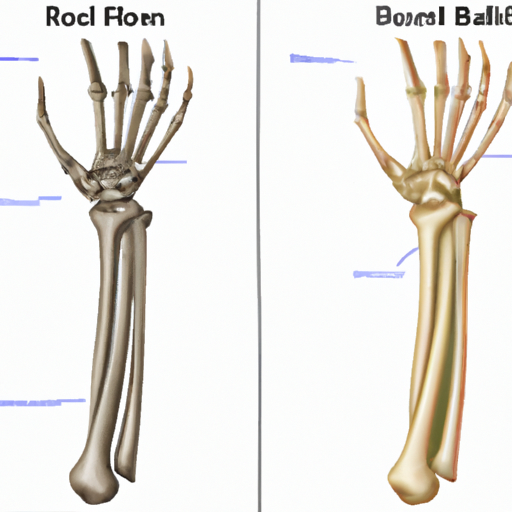Understanding the Difference in Arm Bones: Ulna vs Radius
The human arm is a remarkable structure composed of several bones that work together to provide strength, flexibility, and support. Among these bones, the ulna and radius play a crucial role in the functioning of the forearm. In this article, we will delve into the differences between these two arm bones and shed light on their unique characteristics.
What is the Ulna?
The ulna is one of the two long bones located in the forearm, alongside the radius. It is situated on the inner side of the forearm, running parallel to the radius. The ulna extends from the elbow joint to the wrist joint and is slightly longer than the radius.
The ulna is responsible for providing stability and support to the forearm, allowing for various movements such as rotation and flexion. It also acts as a protective shield for the nerves and blood vessels that pass through the forearm.
What is the Radius?
The radius, on the other hand, is the second long bone in the forearm, positioned on the outer side. It runs parallel to the ulna and extends from the elbow joint to the wrist joint. Unlike the ulna, the radius is shorter and thicker.
The radius plays a crucial role in the movement of the forearm, particularly in rotation. It allows the hand to rotate freely, enabling actions such as turning a doorknob or using a screwdriver. The radius also contributes to the overall strength and stability of the forearm.
Differences between the Ulna and Radius
While the ulna and radius are both essential bones in the forearm, they have distinct characteristics that set them apart. Here are some key differences:
1. Location: The ulna is positioned on the inner side of the forearm, while the radius is located on the outer side.
2. Length: The ulna is slightly longer than the radius.
3. Shape: The ulna is relatively straight, while the radius has a slight curve.
4. Function: The ulna primarily provides stability and support to the forearm, while the radius enables rotation and contributes to forearm strength.
5. Articulation: The ulna forms a joint with the humerus (upper arm bone) at the elbow, while the radius forms a joint with both the humerus and the ulna.
In conclusion, understanding the difference between the ulna and radius is crucial for comprehending the intricate workings of the forearm. While the ulna provides stability and support, the radius enables rotation and enhances forearm strength. Together, these two bones work harmoniously to facilitate a wide range of movements and actions.




